A furnace constantly turning on and off signifies short cycling. When a furnace causes short cycling, it prevents your home from getting comfortable, warm air in the winter.
The primary reasons your furnace is short cycling include a bad flame sensor, overheating, dirty filter, oversized furnace, blocked heat grates, blower malfunctioning, defective fan switch limit, and thermostat issues. To fix the issue, check the obvious problems; if not, consult an HVAC specialist.
You can easily solve some short-cycling reasons, but the rest will need an HVAC expert. This guide will share the signs of the short-cycling, the reasons behind it, and how to resolve the problem.
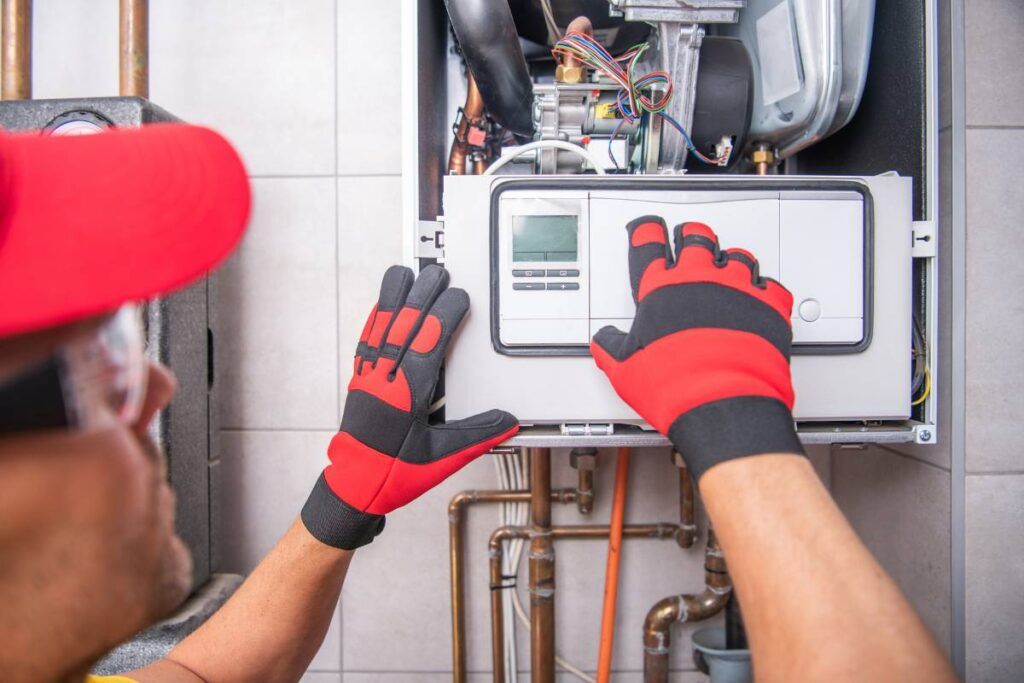
Check out our list of top-handpicked products for all your electrical, appliance, and HVAC system needs to keep your home running smoothly.
This post includes some affiliate links.What is a furnace short-cycling?
A furnace is responsible for releasing warm air throughout the house.
When you turn the unit on, it will begin a heating cycle to suck in the surrounding air, warm it up, and release it around the rooms.
The time the heating cycle runs depends on the temperature set in the thermostat.
Unless and until the unit gives you the desired temperature, it will keep running.
Generally, one heating cycle runs for quite a long time.
You will hear a clicking sound in your thermostat when the device sends a signal to the furnace for starting and shutting down.
You will also hear the soft sound of the airflow when warm air blows into your living room, the burner ignition, and the blower motor running.
Furnace short-cycling is just as the name suggests – short heating cycles.
The heating cycle should run until it reaches the desired temperature.
But it runs in short cycles and shuts down after some minutes of running without reaching the desired temperature.
A good way to tell that your furnace is short-cycling is when you observe that the heater turns on and off several times without producing any warm air.
Signs of furnace short-cycling
- A cold house is one sign as the unit shuts down quickly without warming your house. However, a cold house can also mean poor insulation, undersized furnaces, or faulty and outdated windows.
- The furnace heating cycle lengths become shorter, less than five minutes.
- Your furnace will start frequent cycles, like 5 to 8 times per hour.
- Your room and thermostat temperatures won’t match each other.
Why is your furnace short-cycling?
Multiple reasons could be responsible for a furnace short-cycling.
Some house owners can easily correct the problems with a little guide.
In contrast, the other reasons will need an HVAC’s immediate attention.
Let’s learn the reasons in detail and how to solve them:
1. Oversized furnace

Short-cycling time: Mostly 3 to 7 minutes
An oversize furnace is one of the major reasons behind short cycling quickly.
If your furnace is short-cycling too much and your energy bills are quite high, consider checking the unit size.
Since the unit will be bigger than your house size, it will quickly finish the heating cycle to warm up the air and turn it off.
Besides that, it will unevenly distribute the air throughout your house.
Solution
Unfortunately, you have nothing to fix here except replacing your furnace with a new one based on your house size.
Different house sizes require different furnace sizes.
- 1,200 square feet house – 36,000 to 72,000 BTU
- 1,500 square feet house – 45,000 to 90,000 BTU
- 1,800 square feet house – 54,000 to 108,000 BTU
- 2,100 square feet house – 63,000 to 126,000 BTU
- 2,400 square feet house – 72,000 to 144,000 BTU
The size will also differ based on your living zone. Hotter zones require small furnace sizes, even if the house is big.
2. The thermostat was mounted in the wrong place.
Short-cycling time: Whenever the house does not heat up properly.
The thermostat’s location can affect the furnace unit’s heating capacity.
A thermostat present near the furnace can heat faster than normal.
The furnace emits warm air to reach the desired temperature that you set in the thermostat.
A thermostat present receiving direct sunlight will also heat up faster and affect the temperature reading.
So, when the thermostat heats up faster than normal, it will signal the furnace to stop running the cycle.
Therefore, your furnace will short cycle and shut down without warming up your house.
Solution
Keep your thermostat in the central location of your house.
It will stop the device from heating fast and keep your furnace from short-cycling.
A local HVAC can also help you with the furnace and thermostat location and suggest the best place for them.
3. Dead thermostat batteries
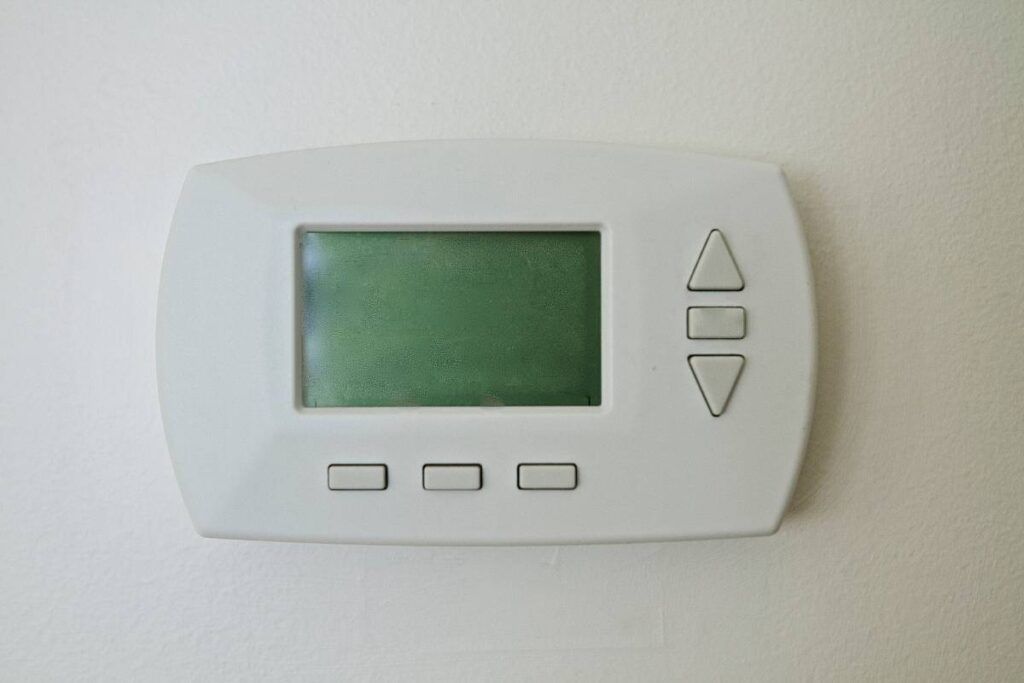
Short-cycling time: Whenever the unit gets the signal to shut down the heating cycle.
When your thermostat battery is low or dead, it sends the wrong signal to the furnace.
It will create trouble in the accurate reading and affect the cycle length.
For example, the thermostat may signal the unit to shut down frequently without letting the unit warm up the house completely.
Solution
Change the batteries to resolve the issue, especially if it has been 10 years.
While buying, ensure the battery suits your thermostat’s make and model.
Some thermostats are wired directly to the HVAC system.
4. Dirty furnace filters
Short-cycling time: 2 to 5 minutes
A filter restricts the airflow from the furnace, leading to short cycling.
When the air fails to go out of the system, it can build up inside the furnace and overheat the unit, causing short cycling.
Besides affecting the heating cycles, dirty air filters will prevent your house from getting warm air during the winter.
A broken air filter will also have the same effect.
Solution
One simple solution is to change the filters every 3 o 4 months.
The changing frequency depends on the filter thickness. For example:
- 1 to 2-inch thick – Change every 1 to 3 months
- 2 to 4-inch thick – Change every 3 to 6 months
- 5 to 6-inch thick – Change every 9 to 12 months
To change the filter:

- Turn off your unit.
- Remove the access panel of the furnace.
- Unscrew and take the filter out.
- Replace it if the filter is clogged or damaged.
- Wash, dry, and put it back if the filter is reusable.
- Please ensure the arrows remain in the same direction as before.
- Close the access panel and turn on the unit.
5. Clogged exhaust flue or vent
Short-cycling time: 1 to 5 minutes
Random materials around your house can make their way to the flue.
The deadly carbon monoxide is dispersed through this exhaust flue.
If the flue gets blocked, the carbon monoxide won’t be able to escape and start spreading around your house.
The furnace will shut down frequently when the exhaust flue clogs, preventing carbon monoxide from spreading.
Leaves, birds’ or animals’ nests, bee hives, and other things can block the exhaust vent.
Sometimes, house owners put screens on the vents to prevent pests from entering, blocking the exhaust.
Solution
Fortunately, removing the blockage prevents short cycling.
It would be best to call an HVAC for a clogged exhaust flue.
Call a pest specialist if the blockage is due to any animal nest or bee hive.
6. Blocked heat grates
Short-cycling time: 3 to 10 minutes.
When the air flows from your furnace, the heat grates or HVAC registers will allow the warm air to leave the system and distribute in all the rooms in your house.
The grates have dampers that allow you to control warm air distribution in the rooms.
So, when the heat grates get blocked or remain closed, it prevents the system from releasing adequate heat and air to warm your house.
As a result, the warm air will build up inside the furnace, overheat, and cause short-cycling without letting the air distribute evenly.

Solution
Check the registers for any blockages.
Sometimes, debris can collect in the heat grates.
Removing the dirt and debris can quickly solve the issue.
Otherwise, you may need HVAC’s help.
Regular maintenance can prevent the problem.
Make sure that at least 75% of the heat grates are open.
If any furniture is blocking, remove the item to some other place.
7. Blower motor
Short-cycling time: 3 to 5 minutes.
The blower receives warm air to distribute throughout the house.
When it does not work correctly, the system cannot spread the air properly and fail to reach the desired temperature.
As a result, the warm air will stay inside the unit and make the system shut off frequently due to overheating.
The heat exchanger in the furnace cannot heat the air when the blower motor is off.
Solution
When you suspect a short cycle, go to the vents to feel the airflow.
If the flow is weak or there is no air, the problem is in the blower.
You need an expert’s help to fix the blower motor.
8. Bad flame sensor
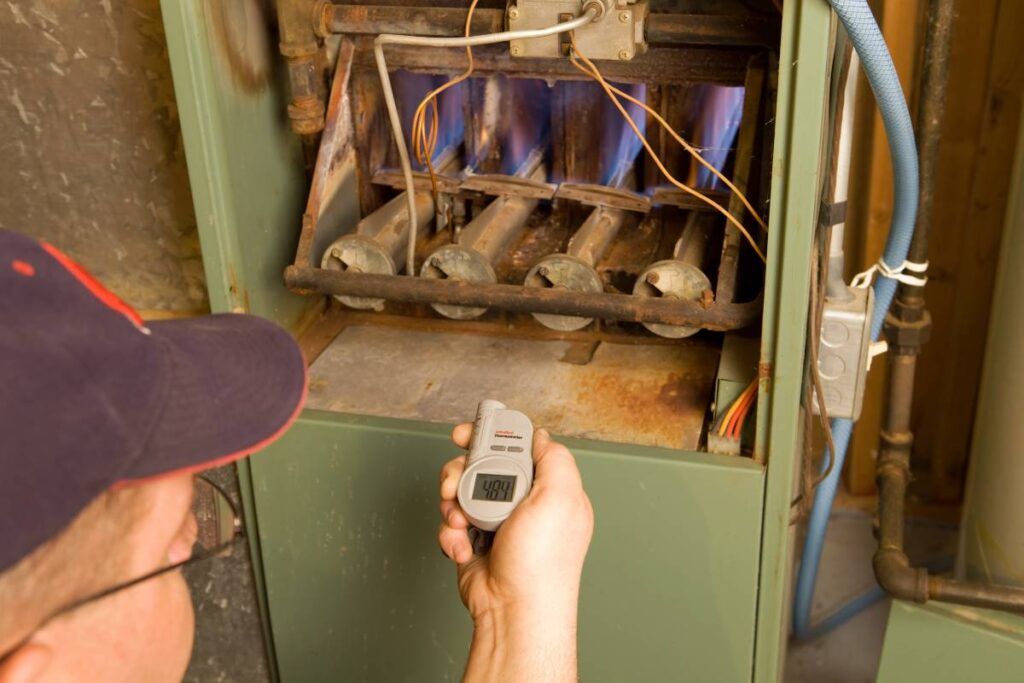
Short cycle time: Few seconds after the burner fires up.
A dirty or faulty flame sensor will not let your furnace light up.
Instead, the flame sensor will go out immediately after lighting up for once.
The flame sensor lights up your furnace when they sense the flame.
The sensor cannot sense the flame completely if it is dirty or faulty.
Therefore, it will shut off the natural gas valve to prevent the pumping of raw gas into your house for safety purposes.
A bad flame sensor will shut off the flame immediately after lighting up, resulting in a short furnace cycle.
The ignition sensors will also crack due to rust or corrosion.
The furnace produces water during the heating cycle, especially the high-efficiency furnaces with 2 heat exchangers, leading to corrosion.
Solution
Replacing the flame sensor is the best way to encounter the problem and prevent further short cycling.
Doing so will require proper tools and techniques.
It would be best to leave it to the HVAC experts.
To clean the flame sensor yourself, follow the following steps:
- Turn the furnace power at the breaker box.
- Remove the furnace’s access panel and locate the sensor.
- It will be a bent metal rod with a white porcelain base at the mounting end.
- Remove the screws and gently take out the sensor rod.
- If the tip of the rod is black or dirty, rub it with steel wood or scrape it lightly with a knife. You can also use an emery cloth (3M Emery cloth, 03008, 3⅔ in. x 9 in.) to clean the rod.
- If any part of the sensor is cracked or broken, replace it with an HVAC’s help.
- Once cleaned, put the sensor back and screw it properly.
- Put back the furnace access panel and turn on the unit.
9. Defective fan limit switch
Short-cycling time: Whenever the unit overheats.
If the switch is faulty, there would not be assumed timing.
The fan limit switch of the furnace lets the unit blower know when to turn it on and off.
It controls the hot air movement.
The fan limit switch in the furnace is a safety switch that triggers whenever it senses something wrong in the unit.
The switch will shut down the unit frequently if there is any overheating, leading to short cycles.
Besides that, if the switch is faulty, it may send the wrong signal to the unit and frequently turn the unit on or off, leading to short cycling.
Solution
Fan limit switches are sealed devices.
So, do not repair them, but replace them.
The cost can range between $100 and $200 without the labor charges.
The price will increase based on the labor charges.
Why is it important to fix the short cycling in the furnace?
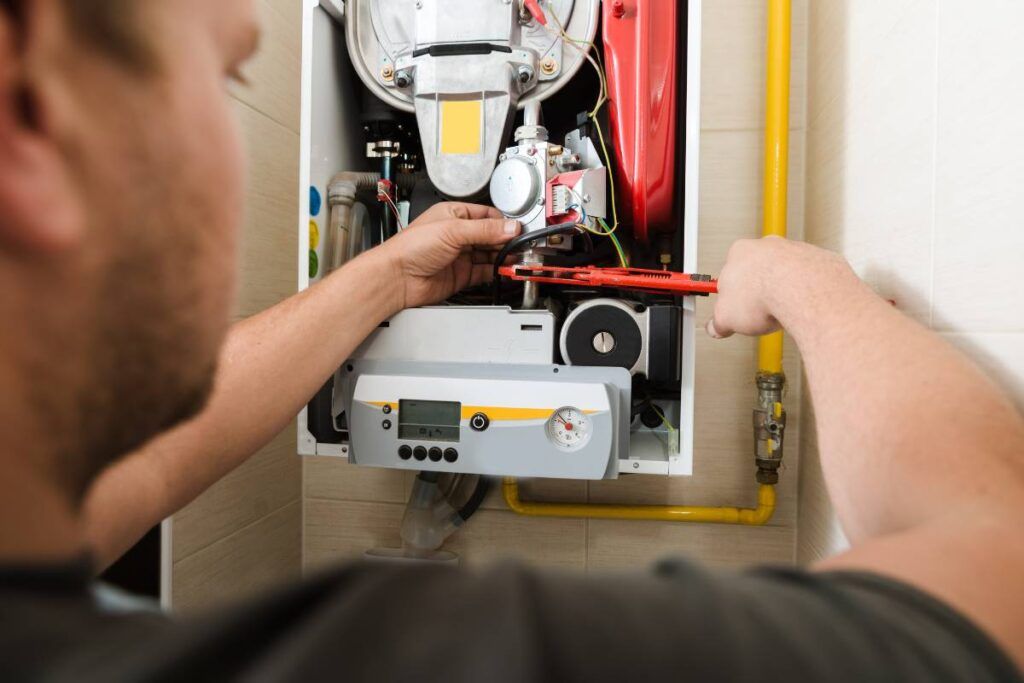
Furnace starting properly is one of the most important things for furnace operation.
When your furnace keeps turning on and off, it greatly affects the unit’s efficiency and reduces lifespan.
Over time, it can lead to system breakdown and long-term damage.
Following are some reasons why you must fix a short-cycling furnace:
1. Maintains safety
A furnace that keeps short cycling may have a bigger and more serious impact if kept untreated.
For example, overheating is a very serious problem.
If you do not fix the short cycling due to overheating, it can lead to fire hazards.
Fixing the problem will keep you safe from such dangers.
2. Maintains comfort
If the furnace constantly turns on and off, the indoor temperature will be either too hot or too cold.
If these temperature changes keep happening for a long time, it will affect your health and encourage poor sleep.
Fixing the problem will stop this uncomfortable situation and keep you and your family healthy.
3. Prevents system breakdown
Furnace short-cycling can deteriorate the furnace components due to the extra strain during multiple startups.
It can eventually result in a much bigger problem in the future.
Repairing that problem will be too complicated and expensive.
So, instead of letting the problem stay and causing expensive damages, fix the problem in the first place with little effort.
4. Increases the energy efficiency
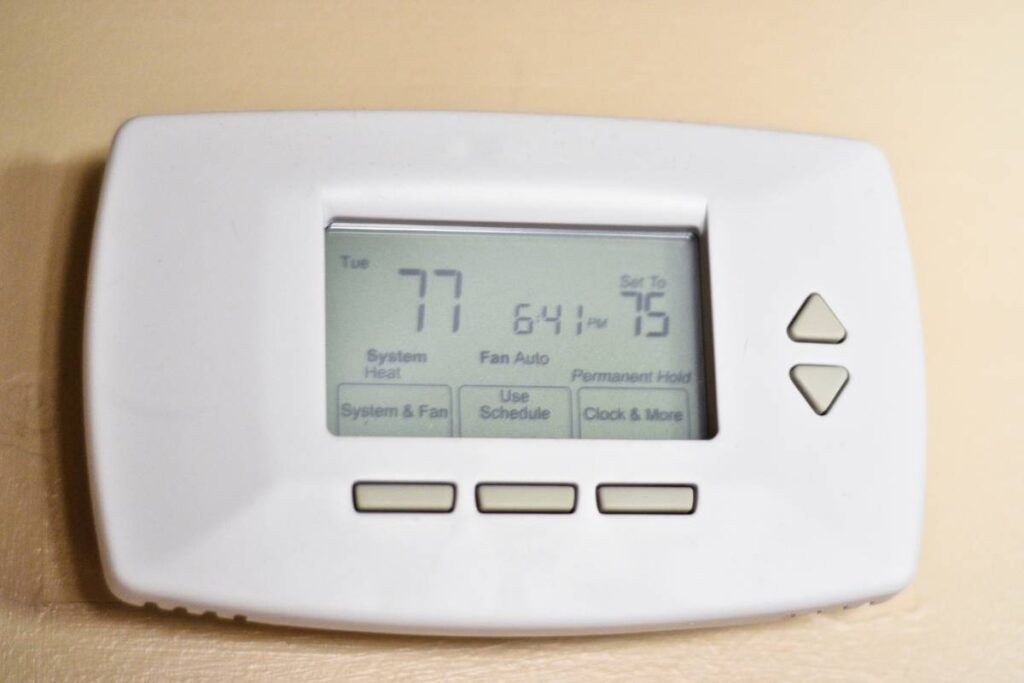
Whenever the furnace starts, it uses more energy than when it is running.
So during the short cycling, the energy bills increase too much whenever the unit starts up unnecessarily.
It will lower energy efficiency and increase energy consumption and energy bills.
Also check:
- Furnace Only Works After Reset: 9 Problem+Fix
- 15 Reasons Your Furnace Won’t Turn On (+Fix)
- 14 Reasons Your Furnace Won’t Turn Off (+Fix)
- 16 Reasons Your Furnace Is Not Heating (+Fix)
- 10 Reasons Why You Shouldn’t Run A Furnace Without A Filter
Final thoughts
Constant short cycling of the furnace will cause an early breakdown of the heating system.
Change the air filters every 3-4 months, remove the obstacles blocking the heat grates, and clear the exhaust vents and flame sensors.
If you can’t do it yourself, call an HVAC team.
Replace the thermostat batteries when they are dead and place them at some central position in your house, where it can signal the furnace correctly.
Consult an HVAC team to fix the blower motor, defective fan switch, and cracked flame sensors.
If your furnace is oversized, get the right size for your house.
Do not let the problem stay for long. Otherwise, you might have to face severe issues in the future.
Does a cracked heat exchanger cause short cycling?
A faulty heat exchanger can also cause short cycling because it emits heat to other components of the furnace, leading to overheating and short cycling.
What is the normal running time of the furnace heat cycle?
Generally, the furnace heating cycle lasts for about 10 to 15 minutes.
However, it is based on your thermostat setting and the heat your house needs.
Reference: Wikipedia.
